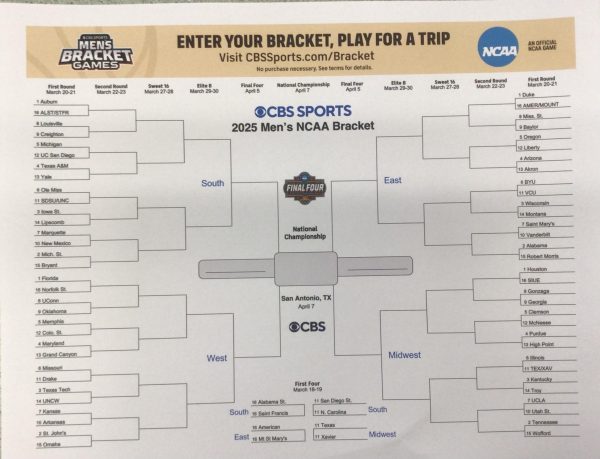Opinion: Race should not be considered in college admissions
Colleges all around the nation use affirmative action as part of their admissions policies.
On July 2nd, 1964, President Lyndon B. Johnson signed the Affirmative Action bill into law. During that time, college admissions departments around the country began considering race as a factor when admitting new students. That led to President Johnson passing Title VII to make up for past racial injustices.
This law came to be known as affirmative action, and it paved the way for a more diverse workforce and educational experience through preferential hiring and admittance practices.
There was a time and place for this to be passed where the law could be helpful and worked, but it is now outdated and doing the opposite of what was intended of it.
The nation may soon take a new approach to affirmative action because the Supreme Court will hear two key affirmative action cases, which have the potential to end affirmative action completely.
One case is led by Edward Blum, a conservative white lawyer who heads the anti-affirmative action group Students for Fair Admissions. This case accuses two schools of discriminating against Asian Americans in the admittance process and favoring African-American and Latino students more highly.
In an ironic twist, while affirmative action was passed to give favor to minority groups and people of color like Asians, Hispanics, and African-Americans, there have been many protests to end affirmative action by these minority groups, the most notable being an Asian American-led protest by a UC Berkley student named Calvin Yang.
Yang claims that he was denied entrance to Harvard because of his race. He said, “There is a trend here. A trend where Asian Americans are systematically getting discriminated because of who we are.”
Because of the conservative leanings of the Supreme Court, it is projected the court will most likely overrule affirmative action and it will no longer exist. During an earlier discussion, the justices talked about the validity and merits of affirmative action. Back in 2003 the justices indicated that affirmative action should not be needed indefinitely and would one day be unnecessary. The timeline for the next discussion was set for another 25 years until this case was brought up.
In late October, Justice Clarence Thomas said he did not understand the meaning of the word diversity when it came to campus life and education. He claimed that having a diverse population in the student body reduces group-think, which leads to a wider range of ideas informed by a larger variety of experiences, but the diversity he spoke of wasn’t based on race.
Affirmative action had its time. The biggest advantage to it is that it can eliminate socioeconomic difference. When the Great Recession ended in 2009, the overall income a household received in the United States rose by 6.9% over the next 3 years thanks to affirmative action. Affirmative action allowed minorities who were going to college in very small numbers through the mid-20th century to go at a higher rate and get better jobs, which resulted in a more successful America. It can also promote diversity and adds perspectives to the learning and work environment that wouldn’t be present if the program wasn’t in place.
However, it is now progressing backwards and doing the opposite of what was intended. This bill was once a fully functioning program that benefited the minority groups that it was targeted for. It created diversity and leveled the playing field for minorities after and during a time period full of racial prejudices and indifferences. But now it is hurting some of those people more then it is benefiting them.
According to a 2019 study by PayScale, the average African American makes 87 cents for every dollar made by a person who is white. However, among blacks and whites with similar educations and qualifications the gap closes dramatically. Among those workers, blacks made 98 cents for every dollar whites make. The real problem lays in life after college and the wage gap.
In 2018, the highest increased enrollment rate by race was Asian with there being a 56% increase while whites only increased by 39%. With African Americans only being 8% lower than whites, this shows that the admissions gap is being closed and if anything, being favored towards minorities.
In this generation, college is a lot more accessible to all kinds of people, no matter race, gender, or tax bracket. Over one third of students in college right now are first generation college students in their family because the rest of their family may not have been lucky enough to go to college.
African Americans made up over 25% of college graduates that earned either bachelors, masters, or doctoral degrees. Minorites even lead the highest college graduation rate with Asian students being 74%, Hispanic students with 54%, and Pacific Islanders having 51% of their population graduating. It is not true to say at this point that minorities are not getting a fair chance because they are generally graduating at a higher percentage than white students.
Preferential admissions practices should end, and that includes the practice of legacy admissions, which generally benefits whites.
For someone to get cheaper admission or better circumstances simply because someone in their family tree got to go to that school is completely unfair. These scholarships can stem as far out as cousins, siblings, and even nephews. These scholarships being mostly used in Ivy League schools is odd to say the least and it discredits well known and prestigious schools like Harvard, Cornell, and Princeton because they flat out disregard students educational merit.
Although this bill once served a purpose, overtime, it has become obsolete and outdated. The death of affirmative action should start a wave of banning ANY unfair or biased laws that can favor a certain group just because of their skin color or heritage.







